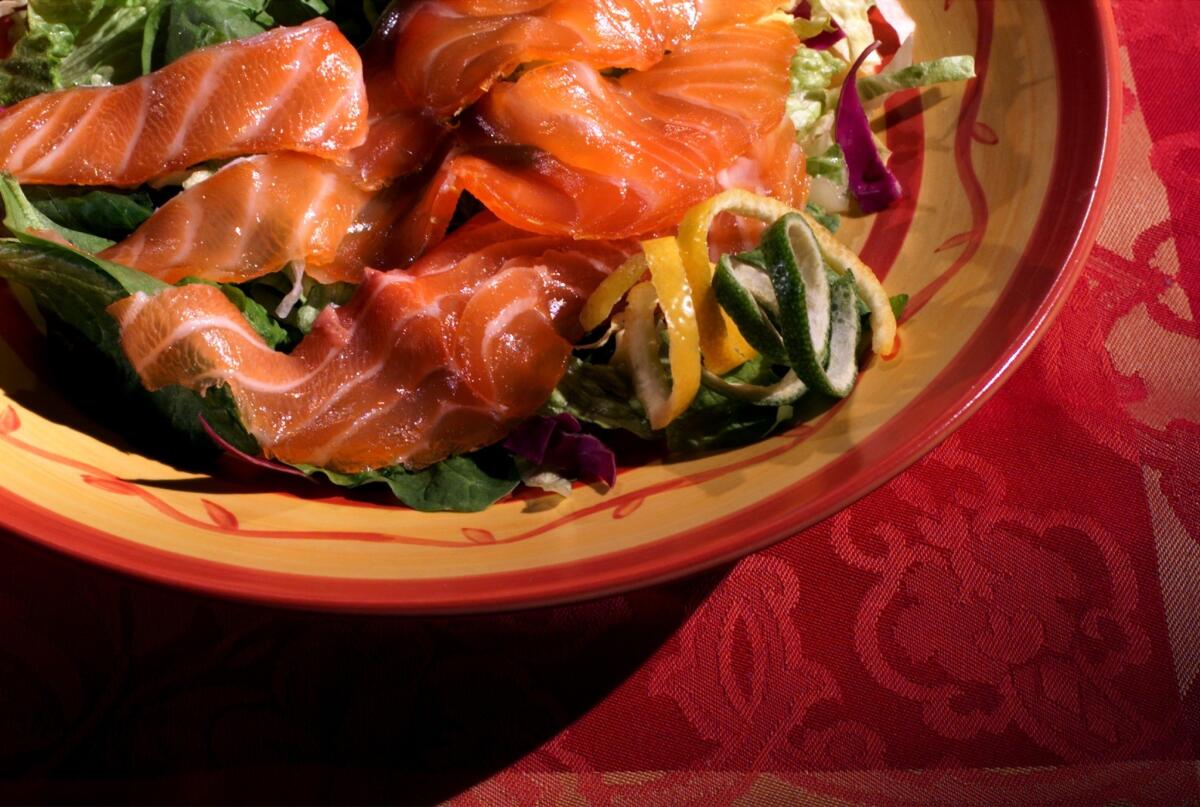From the Archives: Harnessing salt’s power

It doesn’t matter whether you’re a professional chef, a cook-hobbyist or a working parent just trying to get dinner on the table: The most important skill by far is knowing how to season food properly.
In most cases, “seasoning” means primarily one thing--learning to use salt. No other ingredient has such a dramatic salutary effect on so many different foods and in so many different ways. Salt is used in virtually every type of cooking to heighten flavor, even in sweets like ice cream, chocolate and fruit.
Furthermore, salt is a formidable tool. Add salt to the water you boil green beans in and they will come out vividly colored and perfectly seasoned (about 1/2 cup of kosher salt per 8 cups of water, and then be sure to shock the vegetables in ice water afterward to set the color and rinse them; soft vegetables like broccoli will absorb more salt, so use less).
Salt cures and preserves meats and fish by drawing out moisture. Salt is what makes a brine work, and it is the means for koshering chicken. It’s an effective marinade for tomatoes, drawing out water to intensify their flavor.
Excellent sea salts, such as fleur de sel and sel gris, which come from the coastal regions of northern France, are effective as textural garnish in and of themselves. Try just a few grains of fleur de sel on some meltingly soft roasted bone marrow or sprinkled on salad or pa^te (it’s especially powerful on foie gras). It sets off a tiny explosion of flavor and texture.
Any discussion in praise of salt, of course, must note its potential dangers: Too much can be bad for you. Of course, most salt in the American diet comes from processed foods, which are packed with various forms of sodium. If you eat natural foods and season them properly--and don’t have a salt-related health condition such as water retention or hypertension--using salt properly in your kitchen should not be a problem.
Once you begin paying attention to the effects of salt, the difference in your cooking will be extraordinary. Here are the main tenets of salting:
* Use only salts such as kosher or sea salt that have not been iodized, which adds a slight aftertaste.
* The texture of coarse and flaked salts makes them easier to control when you’re sprinkling them by hand.
* Season all pieces of meat and fish with salt a minimum of several minutes before cooking, to allow the salt to melt on the surface (though delicate flesh such as a scallop may actually be cooked by the salt if it is applied too far in advance).
* When salting a large item, such as a roast, season the meat a day before cooking, to give the salt time to penetrate the meat.
* When salting a single portion of meat or fish, salt all sides and be careful that the salt covers the meat evenly (the higher you hold your hand above the item being salted, the more evenly the salt will be distributed).
* When salting liquids (such as a soup or a sauce), always taste it first, then add salt as needed and allow time for the salt to dissolve and distribute itself before tasting it again. Remember, too, that salt takes more time to mix into a fat-based sauce, such as a mayonnaise or hollandaise.
* Take into account the salt contained in various ingredients (when anchovies, fish sauce or bacon are an ingredient in what you’re cooking, you’ll need to add less salt).
* And finally, don’t forget that salt is also an effective abrasive cleaner. Nothing cleans a copper pan better than salt mixed with egg white, flour and lemon juice.
Salt is unfairly denigrated because of its overuse in processed foods (and because of our overconsumption of those foods), but when used thoughtfully on fresh foods, it’s the most important ingredient in your kitchen.
Thomas Keller is chef at the French Laundry in the Napa Valley. He and Michael Ruhlman are co-authors of “The French Laundry Cookbook” (Artisan, $50). Previous columns by Keller and Ruhlman can be found on The Times’ Web site at: www.latimes.com/keller.
Citrus Marinated Salmon
Active Work and Total Preparation Time: 10 minutes plus 24 hours marinating
1 ½ cups coarse salt
1/4 teaspoon ground white pepper
1/2 cup sugar
1 (2-pound) salmon filet
1 ½ teaspoons grated lemon zest
1 ½ teaspoons grated orange zest
1 ½ teaspoons grated lime zest
1 ½ teaspoons grated grapefruit zest
* Line baking sheet with piece of foil large enough to envelope salmon.
* Combine salt, pepper and sugar and spread half of mixture on foil. Place salmon skin-side down on salt mixture. Rub meat side with citrus zest, then cover with remaining salt mixture. Fold aluminum foil over fish and place another sheet pan directly on top. Place weight of some sort--a pan, heavy dish or cans--on top to press salmon to help extract liquid and compact the flesh. Refrigerate 24 hours.
* Remove salmon from marinade, rinse under cold water and pat dry. Slice thinly and serve with toasted brioche as a canape or with greens as a salmon salad.
8 to 10 servings. Each of 10 servings: 164 calories; 921 mg sodium; 45 mg cholesterol; 5 grams fat; 13 grams carbohydrates; 16 grams protein; 0 fiber.
More to Read
Eat your way across L.A.
Get our weekly Tasting Notes newsletter for reviews, news and more.
You may occasionally receive promotional content from the Los Angeles Times.










